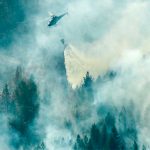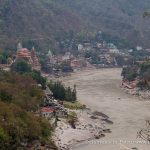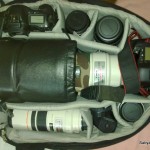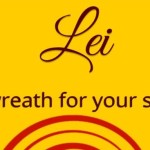IndiaWilds Newsletter Vol.2 Issue III
Wilderness Areas: A Critical Look
What is the fate of our wilderness areas?
This question was posed to me recently. What is the difference between Van Vihar near Bhopal and Bandhavgarh National Park or Ranthambhore National Park. Or for that matter between our protected areas and our “lion safaris” or “tiger safaris” in Nandankanan or Bannerghatta etc. Though the distinction between a controlled environment and a wild one is clear to me from my childhood days, the question nevertheless made me think afresh.
I thought of posing this question to a few people and am reproducing their responses verbatim. “Well there is a difference in size. Zoo is small and Corbett is big”. “The tiger looks so bad in a Zoo. In the forest the tigers coat looks smooth as a silk sari”. “I have read that tiger is the king. In the zoo it was just sleeping like a lazy dog”. “I haven’t seen a tiger in a forest. The tiger I saw in the zoo was moving from one side of the cage to the other and doing nothing else”.
I had no heart to look for more responses.
Let us examine the responses. It is true that the open air enclosures or safaris as they are called are much smaller than our National Parks or sanctuaries. Also, animals are fed here and in certain cases there is evidence of Pavlovian conditioning of the animals. For example, in Nandankanan on the outskirts of Bhubaneswar, a few years back I had seen that lions and tigers come to the feeding area when the bell is rung. They now relate the sound of bells with food. In the zoos or small enclosures, animals don’t have the space to move around. So these are not wild like the animals in our National Parks? Or is it so?
Are the animals in our National Parks really wild?
It is a fact that some of our premier National Parks, are run like childrens parks, at the whims and fancies of individuals, rather than being run on sound ecolocial principles. Leaving aside this fact, how wild are our wilderness areas? How wild are our wild animals in our National Parks?
In our wilderness areas, it is expected that our wildlife live and roam around freely. So a tiger or herd of elephants can move from one patch of forest to another. Similarly, a crocodile can move from one waterhole to another in the dry season when the water dries up. That means, when an animal like a tiger dies, another can come from an adjoining forest to occupy its space. If the popluation of a species in one forest increases, then they spill over to the adjoining area. Similarly, if the prey base in the area decreases, then the carnivores have to move out from the park to the neighbouring forests. Is free movement possible between our National Parks and protected areas?
Unfortunately, not too many wilderness areas have contiguity. Our wilderness areas have become fragmented and its denizens separated from each other. For example there is no connectivity between Ranthambhore National Park in Rajasthan and Kuno wildlife sanctuary in Madhya Pradesh or between Ranthambhore and Sariska to name a few. Human habitations, cultivation areas, roads, canals, dams etc have severely fragmented our wilderness areas.
So animals need to be airlifted to other parks to restock the population. And when a tiger decides to move out of the new locality a massive combing operation is undertaken to capture the tiger and bring it back to the place we have decided it should be in. This drama though captivates the audience of many a news channels, is far removed from what our conservation priorities should be. So the hand of man is already there as it is in a zoo. Ofcourse, the degree of human intervention varies.
The sceptics of the concept of wilderness often force people to qualify wilderness with the term primordial or primeaval. Wilderness is supposed to be our natural landscape that has not been altered by human activity. If we consider roads, pipelines, industrial infrastructure etc then very few of our National Parks qualify as a wilderness area. If one takes into consideration, the proclivity of our forest department in constructing concrete structures, not many of our National Parks will qualify as wild places. Also, it is often said that no place on earth is probably truly wild, because there has been some human intervention or other from the prehistoric age till date.
We can perhaps never recreate those primordial landscapes teeming with wildlife, as was the case when human population was much lower. The billion plus population in India, with a net increase of one person every two seconds doesn’t help either. The number of pastoralists losing an animal or two to a wild tiger or leopard once in a while was manageable. The number of people staying in small hamlets within our forests either as pastoralists or farmers was less. The forests were teeming with wildife and the tigers and leopards were not much bothered about attacking the cattle. So an occasional loss of cattle to the depredations of a wild tiger or leopard was manageable. The small number of people living within the forests had a lower environmental foot print, so often refered to as “co-existing” with wildlife.
Unfortunately, with increased life expectancy due to advances in modern medicine, and without any natural predator to prey on the human species, our population has exploded, thereby placing more and more demands on our natural wealth. The cultivation areas have increased, the cattle go deeper into the forests to graze; concrete structures along with man made roads, dams and reservoirs cut apart our wilderness areas. Our quest for minerals has converted some of the pristine forests into dump yards. Coupled with our abysmal level of ignorance about our natural wealth, we are continuing on the road to self annihilation. In such a scenario, in a few years time, our national parks are bound to shrink from their present small size of a few hundred sq. kilometres to an even smaller size. The distinction in size between the forests and our van vihars seem to be diminishing. From pristine landscapes to wire fenced zoos, the journey appears to be happening at a rapid pace.
Is this our legacy for our next generation?
There is no simplistic solution. Countries like South Africa has been trying to increase their total protected area network from the current 6% of landmass to the IUCN recommended 10 percent. They are planning to buy the land from people and increase the size of their National Parks. We can take a leaf out of their book and increase the size of our protected areas from the current 4.5 percent. The immediate goal can be to recreate the linkages between our wilderness areas so that animals can move from one area to another on their own volition.
It is a challenge to recreate wilderness areas. It is a fact that no amount of replanting of trees is going to remotely mimic the work of nature. It takes years for native vegetation to come up in an area. Do we have patience to keep on the work? In a world where each one of us is more concerned about the next quarter results, thinking longterm is often termed as a pipe dream. So what needs to be done? What should be the role of NGOs and corporates?
Oflate several corporates have come out of highvoltage campaigns in support of wildlife. It is good that the basic awareness building about the problem, infact the symptom, is being achieved to a certain extent.
Very few donors have the interest or the vision to understand the overall requirements. They flow with the tide. So today it is conservation, tomorrow it would be building hospitals for villages inside core areas of our National Parks; day after it can be a completely different priority. Non-Governmental organisations and Individuals can play a major role in procuring land and handing it over to the forest department for helping recreate the linkages. A few small steps in this direction have been taken by Wildlife Trust of India. Given the enormity of the challenge, we need many organisations and individuals to come forward.
Conservation:
Some of the important news and discussions in the conservation section.
Who is killing the Corbett Tigers?
http://www.indiawilds.com/forums/showthread.php?t=2996
Locals poison two tiger cubs in Ranthambhore
http://www.indiawilds.com/forums/showthread.php?t=3361
Fire in BRT
http://www.indiawilds.com/forums/showthread.php?t=3387
Wilderness Updates:
Similipal Tiger Reserve was in news last year due to the attacks of Maoists. The forest department rest houses were razed down. The forest department elephant was shot dead. Roads were mined. It was feared that the Similipal, the only place in India where evidence of melanistic tiger was found, dead as well as alive, is lost for ever. The recent success of relocation augurs well for the future of Similipal. For further details, you may check this discussion:
http://www.indiawilds.com/forums/showthread.php?t=1673
Wildlife Photography:
I am sharing a few links to some of the fine images shared by our members. A couple of images created with compact cameras also made it to the list, emphasising the fact that vision is equally important in wildlife photography.
A dream called tiger by Subramanya CK
http://www.indiawilds.com/forums/showthread.php?t=3231
Mother and baby Lion tailed Macaques by Mohan Raj
http://www.indiawilds.com/forums/showthread.php?t=3313
Dawn by Praveen P Mohandas
http://www.indiawilds.com/forums/showthread.php?t=3195
Freedom by Praveen P Mohandas
http://www.indiawilds.com/forums/showthread.php?t=3336
Crested Kingfisher, Corbett by AB Apana
http://www.indiawilds.com/forums/showthread.php?t=3214
Silk-n-Dew Festoons by Abhishek Jamalabad (with a compact camera)
http://www.indiawilds.com/forums/showthread.php?t=3322
Light and Shadow by Dr Hari Venkatesh K R (with a compact camera)
http://www.indiawilds.com/forums/showthread.php?t=3250
Bee on flower by Biraj Sarkar
http://www.indiawilds.com/forums/showthread.php?t=3254
Equipment Discussions:
Canon EOS 1D Mark IV – Hands on Review Part II:
The part II of the Mark IV hands on review, examines the noise in intermediate ISOs in blank frames.
http://www.indiawilds.com/forums/showthread.php?t=3372
The Part I of the Mark IV review can be found here:
http://www.indiawilds.com/forums/showthread.php?t=3194
Look forward to your inputs and your support in preserving the last tracts of wilderness and wildlife left in this beautiful country. For other interesting articles and photographs please check:
http://www.indiawilds.com/forums/
Regards,
Sabyasachi Patra
www.indiawilds.com
Profile: http://www.indiawilds.com/profile.htm
Contact: http://www.indiawilds.com/contact%20us.htm
Twitter: indiawilds
Facebook: indiawilds
(Circulated in March 2010)
- GoPro Hero 12 Black - 6 September,2023
- Leopards: The Last Stand - 2 July,2023
- Drifting in the Waters of Sundarbans - 26 March,2023












Leave a Reply